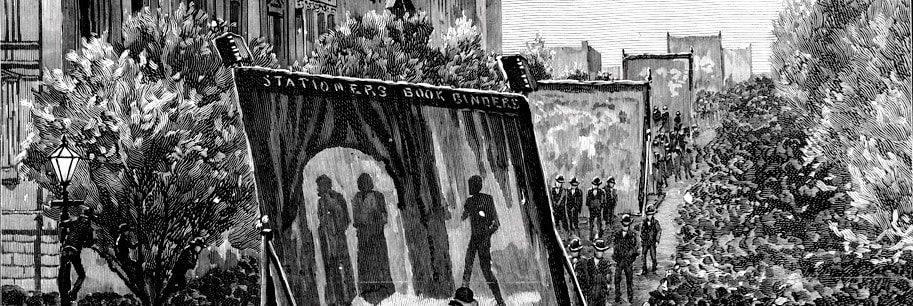“History” is very much a “shape shifter”. It’s a personal presentation that reflects a particular historian’s point of view. So there is no such thing as infallible history only various propositions about what probably happened. We can never truly recreate the past, but only interpret it according to the best evidence that has survived and our personal beliefs about what the evidence shows.
We will use discussion, art, photos and videos where possible to explore the following five topics that are based mostly in the nineteenth century.
1. The indomitable Captain William Bligh: Hero or Villain?
Using the stories of the mutiny against Bligh on the Bounty and the rebellion against him in 1808 in the young settlement of Sydney, we will examine the tensions, jealousies and power plays that fractured the first thirty years of the colony.
2. The Squatter Kings in Grass Castles
Neil Black settled at Glenormiston near Terang in the Western District of Victoria in 1844. He was one of the most prominent of the many Scots who made their fortunes there in wool and weathered the emergence of Democracy and the demands for land for small farms. But where were the Aborigines or the women? And how did the large land holders contribute to the good of the broader community in Victoria?
3. The Large Hole in the Ground
The Australian colonies made their wealth in the nineteenth century by mining. We all know of the gold in the 1850s but what of the others? We will take a look at gold in Kalgoorlie in Western Australia, Mount Isa Mines in Queensland and Mt Lyall in Tasmania.
4. The Boom/Bust Years. Is it all about greed?
Land sharks, shysters, con men and investors! Who could tell them apart? And didn’t everyone want their piece of the action in the 1880s? “Marvellous Melbourne” would be created then wracked by the optimism and despair of this period of economic growth and disruption.
5. The Growth of the Labour Movement in the 1890s
The Shearers Strikes in Western Queensland in 1891, 1894; the Sunshine Harvester Strike of 1911 in Victoria; and The Great Strike of 1917 that started at the Randwick Tram Sheds marked a resumption by a new generation of workers of demands for a “fair go”. Did this all start with the Eureka Stockade in the 1850s? Or were these the first great battles between capital and labour that would come to define Australian politics in the twentieth century? And how do these actions fit with the Fabian Socialism of Sidney and Beatrice Webb who visited Australia in 1898?
Meg Dillon
We will use discussion, art, photos and videos where possible to explore the following five topics that are based mostly in the nineteenth century.
1. The indomitable Captain William Bligh: Hero or Villain?
Using the stories of the mutiny against Bligh on the Bounty and the rebellion against him in 1808 in the young settlement of Sydney, we will examine the tensions, jealousies and power plays that fractured the first thirty years of the colony.
2. The Squatter Kings in Grass Castles
Neil Black settled at Glenormiston near Terang in the Western District of Victoria in 1844. He was one of the most prominent of the many Scots who made their fortunes there in wool and weathered the emergence of Democracy and the demands for land for small farms. But where were the Aborigines or the women? And how did the large land holders contribute to the good of the broader community in Victoria?
3. The Large Hole in the Ground
The Australian colonies made their wealth in the nineteenth century by mining. We all know of the gold in the 1850s but what of the others? We will take a look at gold in Kalgoorlie in Western Australia, Mount Isa Mines in Queensland and Mt Lyall in Tasmania.
4. The Boom/Bust Years. Is it all about greed?
Land sharks, shysters, con men and investors! Who could tell them apart? And didn’t everyone want their piece of the action in the 1880s? “Marvellous Melbourne” would be created then wracked by the optimism and despair of this period of economic growth and disruption.
5. The Growth of the Labour Movement in the 1890s
The Shearers Strikes in Western Queensland in 1891, 1894; the Sunshine Harvester Strike of 1911 in Victoria; and The Great Strike of 1917 that started at the Randwick Tram Sheds marked a resumption by a new generation of workers of demands for a “fair go”. Did this all start with the Eureka Stockade in the 1850s? Or were these the first great battles between capital and labour that would come to define Australian politics in the twentieth century? And how do these actions fit with the Fabian Socialism of Sidney and Beatrice Webb who visited Australia in 1898?
Meg Dillon


 RSS Feed
RSS Feed
